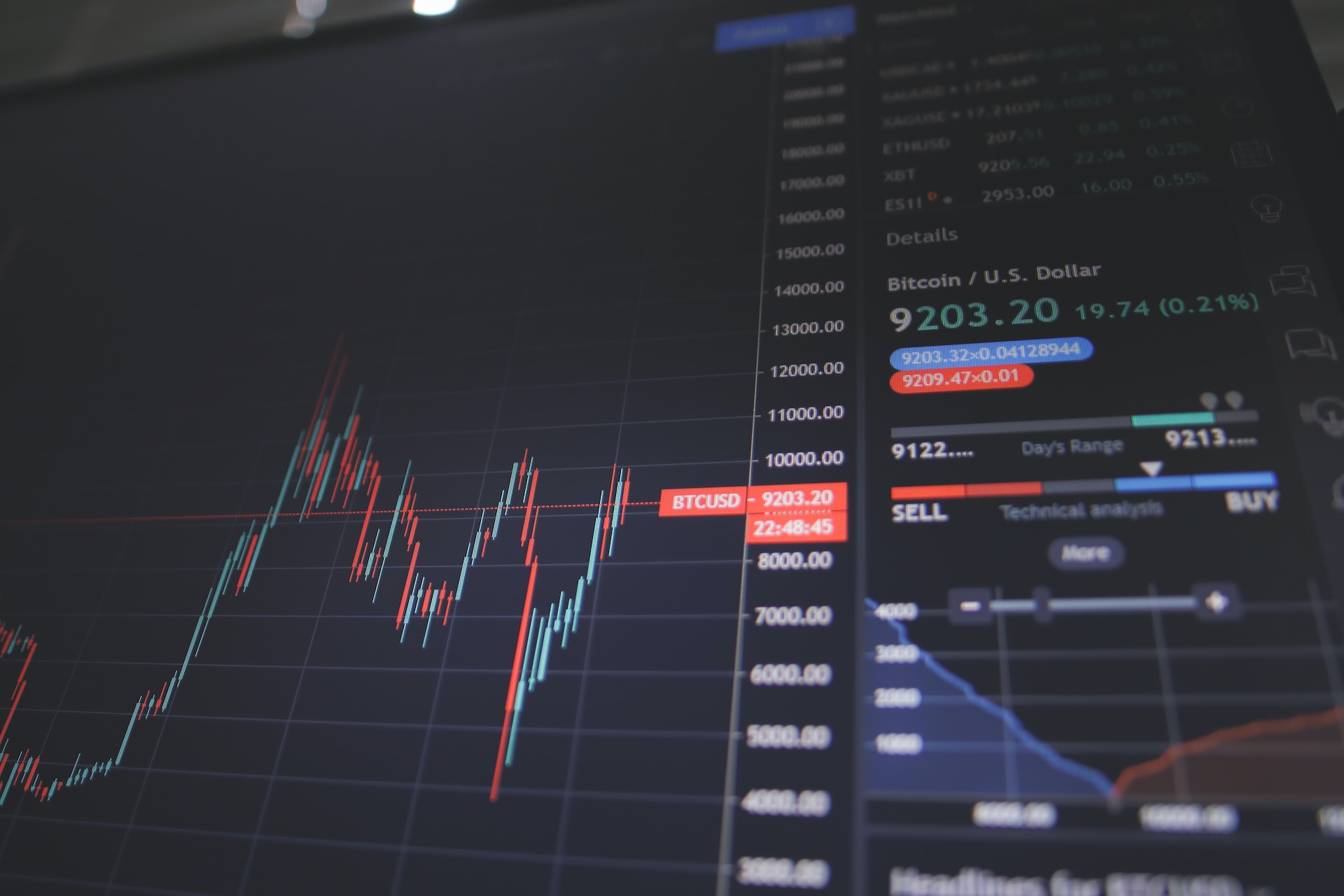Global Corporate Credit Predictor
How to use the model
Collect the following information regarding the company of interest:
- The industry that the company generates most of its profits from.
- The most recent audited financial statements from the company.
Input data into the model and watch the D2D change
Read the credit score of the company and assess its creditworthiness.
The higher the better!
The Bond GetItCredit’s credit ratings can be seen compared to Bloombergs in the Insights section
Data Dashboard
Search
- The user can search through the full dataset of ASX200 corporations by name
- The data shows relevent investor information including D2D as a time series
- Relevent plots below demonstrate similar companies within the sector for an in-sector analysis
Data Dashboard
Sector Analysis
-
The Distance to Default (DTD) 20 Day Moving average can be seen for each sector, along with their distribution of values.
-
Most sectors can be seen significantly decreasing during 2008-2010. This is expected due to the aftermath of the GFC recession. While most sectors have proved to recover, they have not been able to fully recovery to pre-recession figures.
-
Most sectors can also be seen to experience heavily decreasing DTDs in 2019-2020 given the COVID-19 recession.
-
The financial sector, on average, has a higher DTD given it being government backed in terms of the inputs to the model.
-
The financial sector, on average, has a higher DTD given it being government backed in terms of the inputs to the model.
Project
Frequently Asked Questions
A credit score is a quantitative measure of the creditworthiness of a borrower either in general terms or in relation to a specific debt or financial obligation.
When investing or purchasing a corporate bond, we acting as lenders by providing to a loan to that company that is the borrower.
That company promises to give us a percentage return per annum (i.e., coupon rate) and that it will return loan principal (i.e., the total amount borrowed) after a negotiated length of time (i.e., loan tenure).
As investors, we need to have an understanding of the creditworthiness of the firm to ensure that they are able to make their coupon payments and repay the loan principal at the end of the loan’s tenure in a timely manner.
A credit score helps us evaluate the creditworthiness of the borrower.
When investing or purchasing a corporate bond, we acting as lenders by providing to a loan to that company that is the borrower.
That company promises to give us a percentage return per annum (i.e., coupon rate) and that it will return loan principal (i.e., the total amount borrowed) after a negotiated length of time (i.e., loan tenure).
As investors, we need to have an understanding of the creditworthiness of the firm to ensure that they are able to make their coupon payments and repay the loan principal at the end of the loan’s tenure in a timely manner.
A credit score helps us evaluate the creditworthiness of the borrower.
Yes. It is a free educational tool that showcases the capabilities of the research team at the Centre of Data Analytics of Bond University.
This web-app exemplifies our our strong commitment to developing real-world solutions with industry partners and bringing research to practice.
The prediction model used in this web-app is derived from the academic research paper entitled “Corporate credit rating feature importance: Does ESG matter?”.
The importance of corporate social responsibility is increasingly highlighted in the media and academic literature. Furthermore, financial markets have experienced tremendous growth in the issuance of “green bonds” and sustainability-linked loans. The mandates of both institutional and retail investors encourage holding green assets in their investment portfolios to encourage sustainable development.
Our academic work introduces Environmental, Social, and Governance (ESG) features into US and global firm samples with accounting, microeconomic, and macroeconomic features exhibited in the literature for corporate credit rating prediction.
We compare the predictive ability of a range of classification models (e.g., support vector machines, neural networks, tree-based ensembles, logistic regression, quadratic discriminant analysis). As advocated by López de Prado (2020), our feature selection process to improve the efficiency of the classification models utilizes (i) Tree SHapley Additive exPlanations (TreeSHAP) of Lundberg et al. (2018) and Lundberg and Lee (2017) (ii) mean decrease impurity (MDI) and mean decrease accuracy (MDA) by Breiman (2001).
Get in touch with us using the contact forms on this website.
Key Features
When companies want to raise capital, they could take a loan out from the bank, or borrow money from the investors. This latter is more well known as issuing bonds. For this capital investment, investors will get paid interest, known as coupons, typically semi-annually or annually as a percentage of the bonds face-value and returned the principle investment at maturity (the ending of a bond obligation).
Secured bonds are bonds that reduce the risk for investors because the bond issuer writes an agreement to provide assets in the event of a default. Unsecured bonds on the other hand, are riskier because there is no such agreement in a default scenario and as such, investors would expect greater coupons for this risk. In addition to this, there are callable and non-callable bonds. Callable bonds are bonds in which the issuer can pay the principle and end the bond at an earlier date. For investors, these bonds typically have yield higher coupons to compensate for the risk of the bond being called.
To adequately quantify the riskiness of bonds, most bonds have a rating applied to them. The Distance to Default model on this website is one of the main methods of rating bond securities. The factors that contribute to the riskiness of bonds can be seen under the bond risks section.
This post will talk through the key features of a bond. There are 5 key features of a bond: yield, coupon rate, maturity date, face value and the issuer.
Yield:
The first key feature, is the yield. This feature measures the return of a bond. The two most popular types of yields are the, “Purchase Yield and Yield to Maturity.” The Running Yield offers the investor estimates of the return they will receive as income from coupons. The running yield incorporates the interest payments of the purchase price. Similarly, the Yield to Maturity also offers the return an investor receives from the bond, from the perspective that the bond is purchased and held until maturity. The yield takes into account the total price, total interest payments and the return of the face value at maturity.
Coupon Rate:
The second key feature is the coupon rate. This rate is the interest rate paid on the bond. There are several common coupon rates available: fixed rate, floating rate and index linked. Depending on the term of the bond, the coupons can be paid semi-annually or quarterly.
Maturity Date:
At the titles explains, the key feature, “maturity date” is the date when the bond matures and is due for payment. This includes the total principal and any outstanding interest to be paid on this date.
Face Value:
The key feature, Face Value, refers to the bond’s initial capital value. This also the amount repaid at time of maturity.
Issuer:
The Issuer, is the company that has issued the corporate bond. These types of issuers can range from all size companies.
In comparison to other investments, like stocks, Corporate bonds are seen as much safer and and conservative investments. However, in comparison to other bonds, like government bonds, they are considered much risker due to the default ability of the company. As such the interest rates on corporate bonds are higher than that of other bonds.
Bonds are reviewed for the repayment ability and creditworthiness of the company by several different rating agencies. Each agency has its own model and ranking system but generally follow the same hierarchy. The highest rated bond is referred to as “Triple A”. On the other hand, the lowest rated bonds are considered high yield bonds, as higher interest rates are applied to compensate for the higher risk that is taken on.
The investor will receive regular interest payments from the issuer until arrival at the maturity date. Once arrived, the investor will reclaim the face value of the Bond. The bonds may have a fixed interest rate or a rate that floats according to the movements of a particular economic indicator.
Corporate bonds sometimes have call provisions to allow for early prepayment if prevailing interest rates change so dramatically that the company deems it can do better by issuing a new bond.
Benefits of Bonds:
- Security – Depending on the credit rating of the company, bonds can offer greater certainty that the principal will be repaid compared to other financial assets.
- Produces Regular Income – For those who desire a constant stream of income (e.g., retirees), the bond’s regular interest payments will offer greater income certainty compared to other financial assets.
- Performance – Bonds can have higher interest rates as compared to other financial assets such as term deposits.
- Diversification – Bonds can allow for a way to further diversify your portfolio, which can help reduce the portfolio’s overall risk. They can also help to manage the risk of high-growth assets in your portfolio such as shares.
Risks of Bonds:
- Interest Rate Risk – In the event that the coupon rate is floating, movements in interest rates will not effect the bond’s market price much. This is as the yield changes to be aligned with current interest rates. However, if the coupon rate is fixed, increasing interest rates cause the bond’s market value to decrease. This makes it so that if you were to sell before maturity, a capital loss would be incurred. Since, the yields are fixed, the bond’s market price must instead change to align with the current interest rates.
- Credit Risk – This represents the risk of default, which is investigated in more depth later. The higher the issuer’s credit rating, the lower the bond’s risk and thus the lower the interest rate demanded by investors.
- Liquidity Risk – This represents the risk of not being able to sell the bond easily and quickly in the markets. Some small corporate bonds have poor liquidity, while government bonds have high liquidity.
In the context of the bond market, volatility is defined as the swings in price around the bond’s average price. The higher the volatility, the riskier the bond.
After completing sensitivity analysis, it was found that volatility is one of the main drivers of distance to default. Therefore, instead of assuming a static volatility, we have used the KMV Model, in order to match volatility to the historical asset volatility for the last 12 months. Hence, when using the model generator, take caution, as the volatility input will assume the user has used the KMV Model.
By using this methodology, it yields more realistic behaviour for the asset’s volatility, as well as its market value. A realistic market value for the asset is also difficult to attain, as the main place to find it is within the company’s balance sheet which contains noise and sensitivities. These noise and sensitivities are not accounted for in the distance-to-default model, so would result in unrealistic results.
Default refers to an event in which a company declares its inability to pay its debt which often leads to insolvency. Distance to Default (DTD) provides a different perspective on the concept of default.
DTD is an approach that aims to help distinguish businesses that may be under threat of default before they go insolvent. The DTD model typically ranges from 0 to 5, where 0 represents companies at extreme risk of solvency and 5 indicating strong financial strength. Businesses are not limited to D2D ratings 5 or under, and in many cases, business financial structures may easily exceed a DTD of 5.
DTD takes into account key factors such as the value of the firm’s assets (V), face value of debt (F), expected return on the firm’s asset (mu), standard deviation of asset returns (sigma), and time to maturity of the firm’s debt (T). By increasing debt, it makes sense that our DTD rating would be smaller assuming all else is constant because in the hypothetical situation that a business must pay off more of their debt, they must use more of their assets leaving less and less in reserve. Some analysts like to convert the DTD to a probability by using the normal distribution of the negative DTD score.
This method for probability of default is a base method – many companies use hybrid distributions to account for the fat tail on the default side. In our video, we cover examples of how to calculate the D2D, its formula and the effects of the inputs on the score.
Industry:
Sector in which the company’s primary business activities operate in.
Market Cap:
Total dollar value of a outstanding shares.
Stock Price Volatility:
Percentage change in stock price over a 30 day period
Debt:
Amount of money the company owes
Risk-free Rate:
Rate of return expected to be earnt on an investment with no risk.













